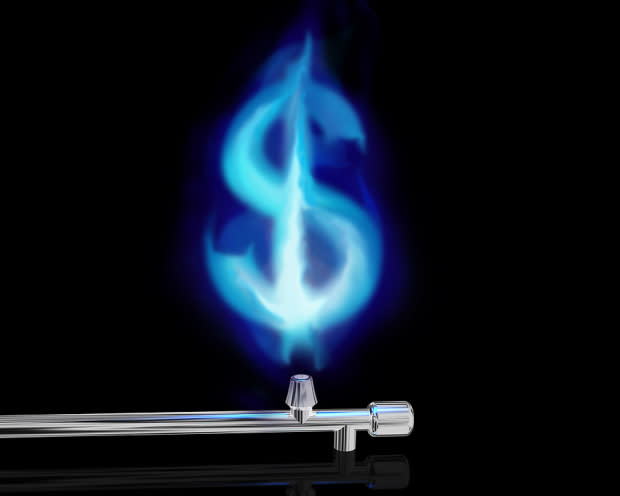Find Out How the Natural Gas Market Performed Last Week

The U.S. Energy Department's weekly inventory release showed a lower-than-expected increase in natural gas supplies. Despite the positive inventory numbers, futures settled with a slight loss week over week, overwhelmed by export weakness and indications of possible aversion of a workers’ strike in Australia.
In fact, the market hasn't been kind to natural gas in 2023, with the commodity trading considerably lower year to date and briefly breaking below the $2 threshold for the first time since 2020. At this time, we advise investors to focus on stocks like Chesapeake Energy (CHK) and Cheniere Energy LNG.
EIA Reports a Build Smaller Than Anticipated
Stockpiles held in underground storage in the lower 48 states rose 18 billion cubic feet (Bcf) for the week ended Jun 18, below the guidance of a 29 Bcf addition per a survey conducted by S&P Global Commodity Insights. The build compared with the five-year (2018-2022) average net injection of 49 Bcf and last year’s growth of 54 Bcf for the reported week.
The latest increase puts total natural gas stocks at 3,083 Bcf, which is 513 Bcf (20%) above the 2022 level at this time and 268 Bcf (9.5%) higher than the five-year average.
The total supply of natural gas averaged 108.5 Bcf per day, up 0.5 Bcf per day on a weekly basis due to an increase in dry production.
Meanwhile, daily consumption edged down 0.4% to 99.6 Bcf from 100 Bcf the previous week, mainly reflecting slightly lower power burn and a decline in deliveries to LNG export terminals.
Natural Gas Prices Barely Nudge
Natural gas prices trended marginally downward last week despite the lower-than-expected inventory build. Futures for September delivery ended Friday at $2.54 on the New York Mercantile Exchange, dropping just 0.4% from the previous week’s closing.
The decline in natural gas realization is the result of maintenance-related outages affecting LNG inflows to export plants and the possibility that Australia, a major player, could avert a labor strike that threatened to cut the country’s supplies to the world.
However, these factors were offset by signs of curtailment in domestic output and favorable weather predictions.
As is the norm with natural gas, changes in temperature and weather forecasts can lead to price swings. With forecasts for hotter weather in the days ahead, demand is expected to be strong.
Apart from bullish weather conditions, a projected slowdown in upstream activity muted natural gas’ fall. According to energy services provider Baker Hughes, U.S. natural gas rig count — a pointer to where production is headed — is now at its lowest since January 2022. Industry observers believe this could set the stage for a pullback in near-term drilling and supplies during the peak summer cooling demand.
Meanwhile, a stable demand catalyst in the form of continued strong LNG feedgas deliveries is also supporting natural gas. Despite falling from their April highs, LNG shipments for export from the United States have been elevated for months on the back of environmental reasons and Europe’s endeavor to move away from its dependence on Russian natural gas supplies following the war in Ukraine.
Final Thoughts
Following last week’s small decrease, the natural gas market is down 43% so far this year. Based on several factors, the space is currently quite unpredictable and spooked by the sudden changes in weather and production patterns, as well as LNG export issues. As such, investors are rather unsure of what to do. As of now, the lingering uncertainty over the fuel means that they should preferably opt for holding on to fundamentally strong stocks like Chesapeake Energy and Cheniere Energy.
Chesapeake Energy: Chesapeake has a premier portfolio with more than 15 years of inventory spread over some 2,200 locations, and around 90% of its total output comprises natural gas. The Zacks Rank #3 (Hold) company’s exposure to premium markets and focus on costs and margins should help it to benefit from any increase in natural gas prices.
You can see the complete list of today’s Zacks #1 Rank stocks here.
Chesapeake beat the Zacks Consensus Estimate for earnings in each of the trailing four quarters, the average being 23.7%. Valued at around $11.3 billion, CHK has lost 18% in a year.
Cheniere Energy: Being the first company to receive regulatory approval to export LNG from its 2.6 billion cubic feet per day Sabine Pass terminal, Cheniere Energy certainly enjoys a distinct competitive advantage.
Cheniere Energy has a projected earnings growth rate of 487.1% for the current year. The Zacks Consensus Estimate for this #3 Ranked natural gas exporter’s 2023 earnings has been revised 7.2% upward over the past 30 days. LNG shares have lost 2.5% in a year.
At the same time, investors might want to sell some bottom-ranked stocks like Gulfport Energy Corporation GPOR.
Gulfport Energy: GPOR has operations across more than 250,000 net acres in the Appalachia and Anadarko basins, and more than 90% of its total output comprises natural gas.
Gulfport Energy has a projected earnings growth rate of (24.9%) for the current year. Valued at $2.1 billion, this Zacks Rank #5 (Strong Sell) company’s 2023 earnings have been revised 6.3% downward over the past 60 days. GPOR shares have gained 12.6% in a year.
Want the latest recommendations from Zacks Investment Research? Today, you can download 7 Best Stocks for the Next 30 Days. Click to get this free report
Chesapeake Energy Corporation (CHK) : Free Stock Analysis Report
Cheniere Energy, Inc. (LNG) : Free Stock Analysis Report
Gulfport Energy Corporation (GPOR) : Free Stock Analysis Report
